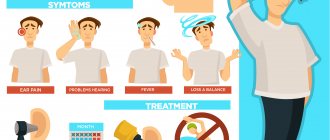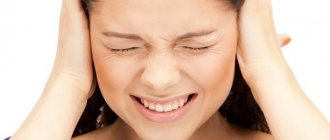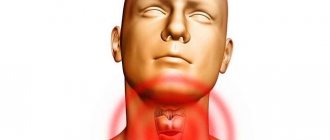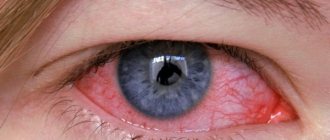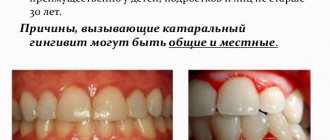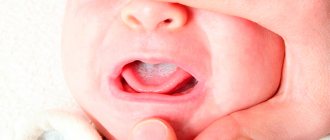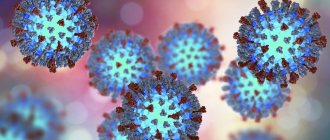Along with the autumn cold comes the cold season. Suddenly my throat starts to feel sore, my nose gets stuffy, I start sneezing and watery eyes. The first symptoms include chills, headache, aches in the joints and muscles, a cough, and often a fever. The usual way of life is suddenly disrupted, the ability to work is lost. How to start treating a cold correctly so that it goes away faster and without complications?
Photo: pexels.com
We will ask the medical expert of the NUR.KZ portal Anna Tikhomirova exciting questions about why a cold suddenly starts and how quickly you can get rid of the painful condition. She often shares valuable tips with readers in her health articles.
So the cause of a cold is not only the onset of cold weather and autumn dampness? What is a cold?
- Of course not. In everyday life, we call a cold a group of acute diseases of the upper respiratory tract. They are caused by viruses, of which about 200 species are known. The accompanying reasons are easy to list:
- hypothermia, wet feet;
- weakened immune system, which is affected by stress, overwork, lack of vitamins and microelements, as well as bad habits;
- With the onset of cold weather, we are more indoors with more people. This increases the risk of rapid spread of a viral infection that is transmitted by airborne droplets;
- Warm dry air in rooms that begin to heat also contributes to colds. Because of it, the mucous membranes of the nose and throat dry out, so they are easily affected by viruses.
As a result of the influence of all causes, we often receive a diagnosis: ARI - acute respiratory disease, or ARVI - acute respiratory viral infection.
Photo: pixabay.com
A cold without fever is absolutely normal
Despite the fact that the art of healing has long become medicine, that is, a system of scientific knowledge and practical methods for identifying and treating human diseases, we still call the viral infectious disease of the upper respiratory tract by the everyday word “cold.” And a cold without fever is also a viral disease. In this case, of all the organs of the upper respiratory tract, the nose and pharynx are primarily affected.
Causes of a cold without fever: the virus is to blame for everything
Without delving into the medical jungle, we can say that of the two hundred strains of viruses involved in the occurrence of colds, the most active are rhinoviruses from the picornavirus family. Once in the human body, rhinoviruses multiply in the cells of the mucous membrane of the nasopharynx, which leads to inflammatory diseases of the upper respiratory tract - nasopharyngitis, nasopharyngitis, acute runny nose or, as we say, a cold. Why does this happen most often during the cold season? Because some of the viruses that cause colds are seasonal. But the reason for their seasonality has not yet been clarified...
In addition, experts have two more versions on this matter. Some believe that the causes of the development of colds, including the causes of colds without fever, are purely physiological. Under the influence of cold air, the blood supply to the mucous membrane of the respiratory tract changes, this leads to a reduction in mucus production, and at this moment the viruses that have entered the respiratory tract begin to multiply intensively.
According to the second point of view, in the cold the human body experiences stress, to which the immune system responds by reducing its protective functions. And a cold without fever (if you stick to this version) is an indicator of strong immunity, which fights off infection without the participation of the hypothalamus, which is responsible for the thermoregulation of our body and “gives the command” to start producing protective antibodies.
However, many studies have been conducted that give grounds to assert that the body’s increased susceptibility to infection during hypothermia is nothing more than a myth...
Since colds are caused by a virus, they can be infected. The most common route of transmission is airborne droplets, as well as direct contact when a person touches the source of infection.
Symptoms of a cold without fever
On average, the incubation period for a cold without fever does not exceed two to three days. From unpleasant sensations in the nose and throat it comes to sneezing and runny nose. According to doctors, up to 40% of people with a cold experience a sore throat during a cold, approximately 60% of people complain of a cough, the presence of a runny nose reaches almost 100%, but the temperature in adult patients, as a rule, remains within the normal range.
At first, the main symptom of a cold without fever is profuse, watery discharge from the nose. After a day or two they become thicker and acquire a mucopurulent character. A runny nose is accompanied by a cough - initially dry, and then with a small amount of sputum.
In the absence of bacterial complications (in the form of sinusitis or otitis), after 5-7 days the symptoms of a cold without fever disappear. True, a cough can last much longer (up to two weeks) and often leads to bronchitis, laryngitis or tracheitis.
A cold during pregnancy without fever (when it is caused by a rhinovirus) has similar symptoms. The same symptoms accompany a cold in a child without fever, but most often the body temperature in children still rises, especially in very young ones. Their body is still developing, so the immune system’s reaction is heightened. For this reason, any cough, as a physiological function of clearing the airways, requires finding out the cause - so as not to miss the same pharyngitis, laryngitis or bronchitis.
In most cases, diagnosis of a cold without fever is carried out on the basis of the clinical manifestations of the disease and does not present any difficulties.
Treatment of colds without fever
The symptoms and treatment of colds were described as early as the 16th century BC - in the medical papyrus of Ebers, “The Book of Preparation of Medicines for All Parts of the Body.” But there is still no cure for the common cold, and we treat—or rather, alleviate—only its symptoms.
At the same time, we must not forget that antibiotics cannot be taken for a cold, since they do not act on the viruses that cause this disease.
Treatment of colds without fever is recommended using folk remedies proven by many generations, which are now called alternative methods. So, when the first cold symptoms appear, you need to take a hot foot bath (with the addition of dry mustard) or rub your feet with vodka or turpentine ointment and put on warm socks. In the treatment of colds during pregnancy without fever, the use of thermal procedures is strictly prohibited: only a warm scarf around the neck and woolen socks on the feet.
But tea with lemon and honey, as well as ginger, is useful for absolutely everyone. For redness of the throat and cough, inhalations with infusions of pine buds, sage, eucalyptus leaves, baking soda solution, and Borjomi-type alkaline mineral water help well. It is better to do them twice a day - in the morning (an hour before leaving the house) and in the evening - an hour and a half before bedtime.
To get rid of a cough, a warm drink has a positive effect - a decoction of rose hips, infusions of thyme, lemon balm, coltsfoot leaves, elecampane roots, as well as warm milk half and half with alkaline mineral water, and at night - warm milk with honey and butter. Please note that hot milk will inhibit sputum production. You need to drink slowly, in small sips.
If you have a sore throat, you cannot do without rinsing in the treatment of a cold without fever. There are a great many of their recipes, but the most effective are: a solution of salt + soda + iodine, infusion of chamomile or sage, as well as solutions of natural apple cider vinegar (a tablespoon per 150 ml of water), furatsilin and hydrogen peroxide (1-2 teaspoons per glass of water ). You need to gargle as often as possible - at least 5-6 times a day.
An irritated and sore throat is often a consequence of a strong cough, and coughing attacks occur more frequently as a result. To get rid of this problem, regular gargling with a warm solution of table salt helps: 0.5 teaspoon per 200 ml of water.
Relieves sore throat by ingesting a mixture prepared from 100 g of natural honey and the juice of one lemon. This natural medicine should be taken two teaspoons several times a day. And homemade drops will help cure a runny nose - fresh carrot juice with honey, raw beet juice: 5-6 drops in each nostril 4 times a day. You can apply a little “Star” balm to the bridge of your nose several times a day and do acupressure in the area of the wings of the nose and at the highest point of the nose - between the eyebrows.
Since treatment of colds during pregnancy without fever eliminates the use of pharmaceuticals as much as possible and involves symptomatic therapy with folk remedies, all of the above methods are completely safe for expectant mothers.
Preparations for the treatment of colds without fever
In the medical treatment of colds without fever, medications for cough, runny nose and sore throat are used. Classic mixtures - marshmallow syrup and pertussin - are considered good expectorants. Pertussin is a combination of herbal preparations (it is based on thyme or thyme extract), it has an expectorant effect, helps thin mucus and accelerates its elimination. Adults need to take the mixture one tablespoon three times a day, children – one teaspoon or dessert spoon.
Tusuprex and mucaltin tablets are also considered classics in the treatment of colds. Tusuprex has an antitussive and mild expectorant effect. The daily dose for adults is one tablet (0.02 g) 3-4 times a day, for children under one year old - a quarter of a tablet, and over a year - half a tablet 3-4 times a day. A possible side effect is digestive disorders. This medicine is contraindicated in bronchospastic conditions (narrowing of the lumen of the bronchi) and bronchitis with difficulty expectorating sputum.
Mucaltin acts as a sputum thinner and expectorant due to the content of marshmallow extract. Adults need to take 1 tablet 4 times a day, children from one to three years old - 0.5 tablets 3-4 times a day (you can dissolve the tablet in 70-80 ml of warm water). Among the contraindications of mucaltin are hypersensitivity to the components of the drug, as well as peptic ulcer of the stomach and duodenum.
For a severe dry cough during a cold without fever, the doctor may prescribe medications that block the cough reflex - glaucine and oxeladine. Glaucine is available in the form of dragees, syrup (including syrup for children) and tablets, and is prescribed for adults - 40 mg 2-3 times a day, for children under 4 years old - 10 mg 2-3 times a day (after food). The drug is contraindicated in severe arterial hypotension and myocardial infarction. Possible side effects include dizziness, weakness and nausea.
Bromhexine, lasolvan, ambroxol, and acetylcysteine (ACC) are used to liquefy and facilitate coughing up sputum. For example, the drug bromhexine (tablets, dragees, drops, syrup) is taken by adults and children over 14 years of age at 8-16 mg 3-4 times a day. Dosage for children under 2 years of age - 2 mg 3 times a day, for children aged 2 to 6 years - 4 mg, for children aged 6-10 years - 6-8 mg three times a day. Duration of treatment - no more than 4-5 days. Contraindications for this drug include hypersensitivity, acute peptic ulcer disease, pregnancy (especially the first trimester) and breastfeeding.
Among the cough medications that doctors most often prescribe for the treatment of colds without fever in children are Gedelix, Prospan, Tussamag, Travisil and Eucabal syrups.
Treating a cold without fever involves getting rid of a runny nose. Trusted drops for a runny nose - naphthyzin, sanorin, galazolin. And in the treatment of rhinitis in children, drops of Nazivin (for babies from birth to one year), Nazol Baby (for children over 1 year), Xymelin (0.05% - for children 2-12 years old and 0.1% - for children with 12 years old). For sore throats, drugs with a local anesthetic effect are used in the form of aerosols - ingalipt, kameton, camphomen. Also in pharmacies there are many different dragees, lozenges, lozenges and lozenges that help relieve sore throat.
But paracetamol for a cold without fever is obviously not worth taking. Since the pharmacological effect of this drug is analgesic and antipyretic, and it is used for: pain of mild and moderate intensity (headache and toothache, migraine, back pain, arthralgia, myalgia, neuralgia), febrile syndrome (that is, elevated temperature) for colds.
Contraindications to the use of paracetamol include hypersensitivity, impaired renal and liver function, alcoholism, and children under 6 years of age. And the list of side effects includes blood diseases such as agranulocytosis, thrombocytopenia and anemia; renal colic, aseptic pyuria (pus in the urine when it is sterile), glomerulonephritis (inflammation of the kidneys with circulatory disorders in them), as well as allergic skin rashes.
Paracetamol first entered the pharmaceutical market in the early 50s of the last century in the USA. Its manufacturer (Sterling-Winthrop company) attracted buyers with the statement that paracetamol is safer than aspirin... According to official medical statistics, in the United States, the use of paracetamol (Panadol) is the most common cause of liver damage - more than 55 thousand cases annually.
ilive.com.ua>
How to treat a cold?
— For colds, people often start taking the first powders and tablets they come across. But there is no universal method for treating this disease; only a doctor can prescribe the correct regimen and the necessary cold medicines . It depends on the symptoms present and the individual condition of the patient. Widespread powders for colds are not recommended for everyone - they have many additives that are harmful for gastrointestinal diseases, diabetes and allergies. (Editor's note: the article by A. Kurbatova, published in the International Scientific Bulletin, discusses in detail modern methods of treating ARVI).
Treatment
Let's consider the main methods of therapy.
Non-drug methods
Before you buy nasal drops, you should try to change a few things in your everyday habits:
- If your nose is stuffy and a severe runny nose prevents you from breathing normally, your head should be slightly higher than your body during sleep.
- It is necessary to minimize the number of plush toys, carpets, upholstered furniture and books in the room, because dust accumulates in them.
- Avoid household chemicals, air fresheners and paints and varnishes during illness, as these factors can aggravate the course of rhinitis.
- Give up bad habits, such as tobacco addiction.
- Humidify the air and regularly ventilate the room where the patient is.
- Drink enough fluid to normalize the rheological properties of mucus in the nasal cavity.
Is it possible to treat a cold at home?
- In most cases, home mode is allowed. But only if the cold occurs without complications, otherwise hospitalization will be required.
When treating a cold, you must follow your doctor's prescriptions, but additional medications can alleviate the patient's condition. In addition to taking medications, we recommend following these rules at home:
- Maintain bed rest to avoid unnecessary stress on the body.
- Drink more liquid: warm tea or herbal decoctions, juices, fruit drinks, alkaline mineral water. This replenishes moisture loss from excessive sweating during illness. But the main thing is that the liquid removes toxins from the body that are released by viruses and bacteria, and reduces poisoning of the body.
- A not very high temperature, 38–38.5 °C, can be left alone if it is not difficult to tolerate. This is a natural consequence of fighting infection. If the temperature is higher, take antipyretics.
- Washing and rinsing significantly relieves unpleasant sore throat and nose.
Do not forget about creating comfortable conditions for recovery: you need to ventilate the room, and also increase the humidity if heating devices dry out the air.
Treatment options
At the first symptoms of rhinitis, a home regimen and plenty of drinking are prescribed. In the absence of elevated temperature, it is quite possible to perform thermal procedures
It is important to learn how to blow your nose correctly in order to clear the nasal cavity and prevent secretions from entering the paranasal sinuses and middle ear. For this purpose, each half of the nose should be released in turn.
For rhinitis, you need to drink a lot of warm liquid. When the temperature rises, antipyretics can be used. For a runny nose of viral origin, it is recommended to inject interferon solutions into the nose.
But how to distinguish allergic rhinitis from colds and what products should be used is indicated here.
To strengthen the immune system and speed up the healing process, it is very important to eat right. In addition, for this purpose, doctors advise the use of immunostimulants and vitamin complexes.
Folk remedies and medicines
In addition to classic nasal sprays, many other categories of medications are used to treat rhinitis.
Typically, the following categories of drugs are used for the treatment of rhinitis:
- Vasoconstrictor drugs. Used to reduce swelling and nasal congestion. The most effective remedies include sanorin, xymelin, and nazol.
- Moisturizers and ointments. Saline solutions - Marimer, Aquamaris, Physiomer - help cleanse the nasal cavity. Ointments are usually used for the atrophic form of rhinitis and help soften the crusts in the nose.
- Angioprotectors. Helps improve microcirculation in tissues and reduce congestion in the mucous membrane. Drugs such as rutin and troxevasin are quite effective.
- Antihistamines. Helps in the treatment of allergic rhinitis. The doctor may prescribe Cetrin, Tavegil, Claritin in the form of capsules or tablets.
- Antiviral drugs. They are highly effective in the treatment of rhinitis of viral origin. Usually drugs such as Arbidol, Anaferon, Oxolinic ointment are prescribed. As for the last drug, doctors often prescribe Oxolinic ointment to a child.
- Antibiotics. Such drugs are indicated exclusively for bacterial rhinitis or complications. Most often, doctors prescribe bioparox.
Local antiseptics, such as Miramistin nasal spray, are also successfully used to treat a runny nose. Among folk remedies, inhalations with decoctions of medicinal plants are ideal. You can make foot and hand baths with the addition of mustard powder. Kalanchoe juice, menthol oil, fresh carrot or beet juice have an excellent effect.
An effective remedy is the use of a saline solution, which is prepared in the ratio of a tablespoon of salt per liter of water. For rinsing, you can use a syringe, syringe or a special device.
Many traditional medicines are suitable for eliminating infectious rhinitis, which is a consequence of viral pathologies. In case of allergic rhinitis, the use of such drugs can provoke an exacerbation. In addition, it should be remembered that many folk remedies are also suitable for treating rhinitis.
What traditional methods of treating colds will be useful?
— People know many manipulations, but they should only be auxiliary to what the doctor prescribes. The most affordable gargles are a weak saline solution (no more than 1%), anti-inflammatory herbal decoctions (chamomile, calendula), you can even take heated alkaline water. They can also be used to rinse your nose, which will reduce congestion.
Photo: pxhere.com
Honey and lemon added to tea will not only improve the taste, but also have an anti-inflammatory effect. It is better to use various compresses, rubbing, and inhalations after consulting a doctor.
Acute rhinitis, what are it? Symptoms and signs
The inside of the nasal cavity is lined with a mucous membrane, which is necessary to humidify the inhaled air, retain dust particles, all kinds of allergens and microorganisms.
Therefore, when natural defenses decrease, it is she who is the first to be affected by them, resulting in inflammation and runny nose.
I received acute rhinitis code according to ICD 10 J00. The following types are distinguished:
- infectious;
- allergic;
- vasomotor.
Nevertheless, acute allergic rhinitis and vasomotor ICD 10 are classified. Therefore, in the future we will consider only acute catarrhal rhinitis of an infectious nature.
Signs
The symptoms of the pathology are obvious and familiar to everyone. First of all, this is the appearance of snot and nasal congestion. But the nature and intensity of these signs depends on the stage of progression of the disease.
- Dry stage. It is typically characterized by redness and the development of swelling of the mucous membrane due to vasodilation, which is accompanied by a feeling of dryness and “tickling”. It usually lasts from a couple of hours to one day.
- Acute serous. The second stage is characterized by the appearance of mucous discharge.
- As you recover, the volume of mucous discharge decreases and swelling goes away.
If an acute runny nose is caused by strains of rhinoviruses that tend to adhere only to the mucous membranes of the nasal cavity, there is no deterioration in the general condition.
Fever, headaches, weakness, etc. occurs only when infected with viruses of other types, and in particular, influenza and bacteria.
If microorganisms have the ability to take root on the membranes of the throat, trachea, etc., they additionally provoke the appearance of sore throat, hoarseness, cough and other pathologies.
Acute purulent rhinitis is often observed. The transition of the disease to this form occurs when a bacterial infection is attached, which is accompanied by the release of thick, yellowish-green snot.
Attention
This form of the disease should not be confused with the recovery stage, for which the mucus typically acquires a yellowish tint, while it does not have an unpleasant odor or impurities of pus.
How long a runny nose lasts depends on its nature. With viral infections, it usually passes quickly within a week, with bacterial infections - in 7–14 days, however, it can acquire a protracted course and turn into subacute rhinitis, and then into a chronic form.
Possible complications and consequences
Acute rhinitis, in the absence of timely, competent treatment, can become chronic. In such a situation, patients with the slightest decrease in immunity will suffer from rhinorrhea and other unpleasant symptoms.
Attention
Often, a banal viral runny nose, in the absence of attention to it, is complicated by the addition of a bacterial infection and drags on for a long time.
Subsequently, non-intervention can provoke postnasal drip and lead to the involvement of the paranasal sinuses, in particular the maxillary or maxillary sinuses, in the inflammatory process, that is, to the development of sinusitis.
Most people know why this type of sinusitis is dangerous. It can become chronic, in which surgical intervention is often required to normalize the condition.
In addition, purulent forms of sinusitis can cause complications in the brain, eyes and other organs of the human body. Therefore, its consequences can be:
- meningeal abscess;
- phlegmon;
- meningitis;
- meningoencephalitis, etc.
In infants, the disease is often complicated by acute otitis media, bronchitis, and pharyngitis.
Prevention
The best prevention is to strengthen the immune system and lead a healthy lifestyle. Regular long walks, a rational balanced diet, hardening and moderate physical activity will help protect against infections or at least tolerate them in the mildest forms.
to the content?
Allergic rhinitis
Allergic rhinitis, commonly referred to as hay fever, is very common. Every year it affects more and more people. In Russia alone, at least a third of the country’s total population suffers from it.
Allergic rhinitis occurs due to the action of external and internal irritating factors on a person. These include:
- plant pollen;
- spores of fungi, mold and yeast, which are common on the surfaces of walls, wallpaper, furniture upholstery, as well as leaves of plants that grow in the patient’s home;
- pet hair;
- waste products of mites that live in the dust of a library or living room, as well as other insects, in particular cockroaches and ticks;
- some food products;
- certain medicines;
- flavorings included in household chemicals.
All of the above irritants, when interacting with them, cause an allergic reaction, which is individual for each person and can last from a few seconds to hours or even longer. In most cases, allergic rhinitis is genetic.
Symptoms in adults
Allergic rhinitis in an adult is determined by the combination of the following symptoms:
- a colorless, watery discharge is observed from the patient’s nose;
- the addition of a secondary infection turns nasal discharge into mucous and pus;
- sneezing becomes more frequent and occurs in bursts;
- severe itching begins in the nose;
- breathing through the nose becomes difficult, which is typical for complex forms of the disease. In mild forms of the disease, nasal congestion intensifies as night falls.
With an exacerbation of a runny nose caused by an allergic reaction, patients change their appearance. Their faces swell, gas begins to water and circles appear under them. They are forced to breathe through their mouths because their nose is blocked. Another common symptom of allergic rhinitis is the so-called “allergic fireworks”.
The patient constantly rubs the tip of his nose with his palm. With a high concentration of an allergen that interacts with the body, as well as with prolonged contact, headaches, a feeling of general malaise, lethargy and subsequent deterioration in well-being may occur.
More about medications
Let's take a closer look at the healing effects of the above medications.
Ergoferon
This drug perfectly and quickly eliminates irritation of the throat mucosa, due to which swelling subsides and redness goes away. Accordingly, painful and unpleasant sensations subside.
ergoferon tablets
Arbidol
This drug has an effective positive effect on the destruction of viruses. Arbidol is especially popular due to its effectiveness and at the same time safety. You can get rid of the first symptoms of a cold by morning by taking a tablet or two of this drug in the evening.
arbidol in capsules
Ingavirin
A modern antiviral drug. The active components of Ingavirin penetrate the virus cells, stopping their spread. That is why the drug quickly stops the infection. It is especially effective if taken immediately at the first sign of a cold without delay.
Ingavirin for the treatment of flu and colds
This medicine is very convenient to use: to relieve the first symptoms of a cold, it is enough to take just one capsule, regardless of meals.
This article will help you understand why a dry cough occurs without signs of a cold, and how you can quickly get rid of this problem.
This article will help you understand how to prepare a cold medicine recipe using ginger, honey and lemon.
what to do when your voice goes down after a cold, and what medications are best to use in this case, is described in great detail in this article: https://prolor.ru/g/lechenie/kak-vosstanovit-golos-posle-prostudy.html
Maybe
Prevention
Prevention of inflammation of the nasal mucosa includes a whole range of measures aimed at eliminating the influence of harmful factors, hypothermia, and timely treatment of other acute infectious and inflammatory diseases.
- It is not recommended to suddenly move from a warm room to a cold one, not to be in drafts, and not to drink ice water or other soft drinks.
- The use of general strengthening agents, hardening, timely treatment of pathologies of the nose and nasopharynx (deviated nasal septum, chronic rhinitis, adenoids).
Rhinitis in adults can develop under the influence of various factors. As soon as the first signs of the disease begin to bother you, you need to contact a medical facility for treatment. This will help identify the disease in the early stages and eliminate its complications.
Folk remedies
Despite the abundance of various pharmacological products, traditional methods of treating rhinitis remain in demand.
- Pour 50 g of pine buds with cold water, close the lid, bring to a boil and simmer for 10 minutes. Strain. For severe runny nose, drink 5-6 times a day with honey or raspberry jam.
- For rhinitis, instill fresh juice of carrots, beets, and put turundas moistened with it into the nose.
- Rinse your nose with a homemade solution of sea salt (a tablespoon per liter of warm water) or table salt (2 teaspoons per glass, if the mucous membrane is hypersensitive - 1 tablespoon each of salt and soda, you can add a drop of iodine). You can suck the solution from your palm by closing one nostril, use a syringe or syringe, or a special mini-teapot.
- Pour 1 tablespoon of peppermint into 0.5 liters of boiling water, leave, covered, for 1 hour, strain. Take 0.5 cups of hot infusion, which can be sweetened with honey. For adults with rhinitis, rinse their nose with this infusion while drinking.
